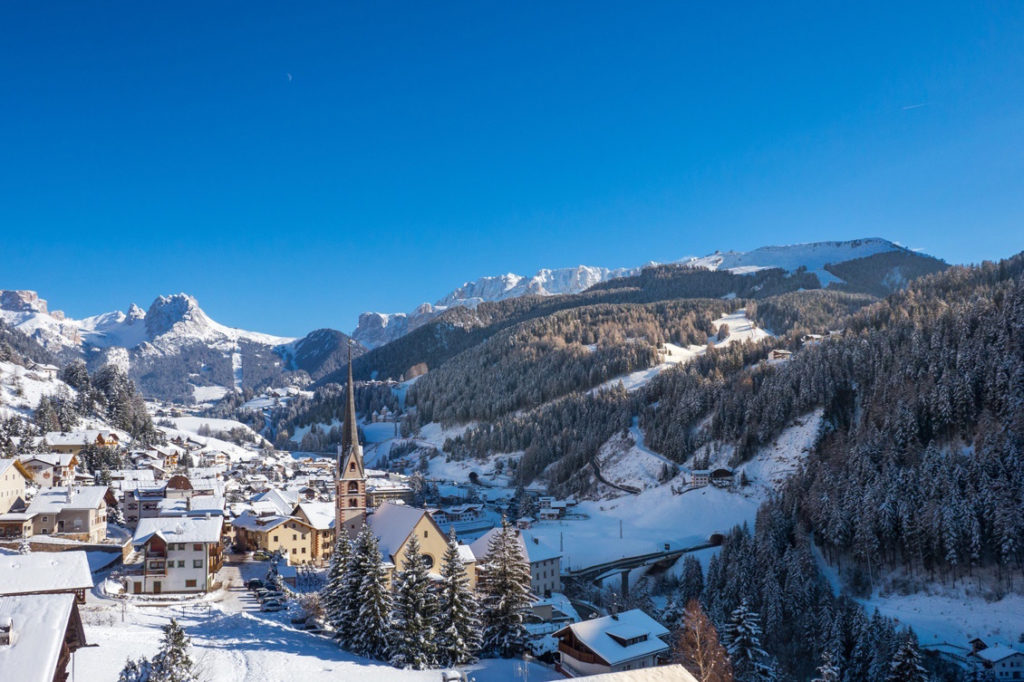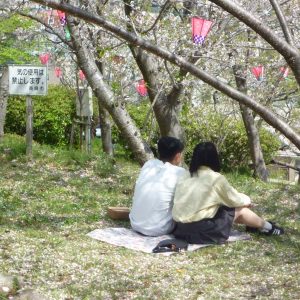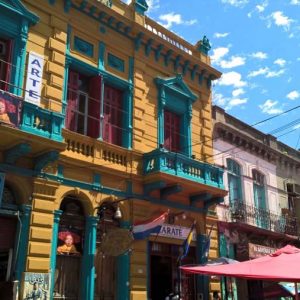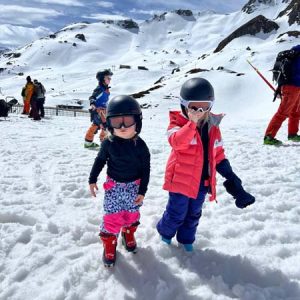Dolomiti Superski is a network of twelve stunning ski areas in north-eastern Italy. Though the ski pass came about in the seventies, the mountains date back 250 million years – a UNESCO World Heritage Site, the pale, rugged Dolomites are undoubtedly some of the world’s most spectacular peaks.
The resorts
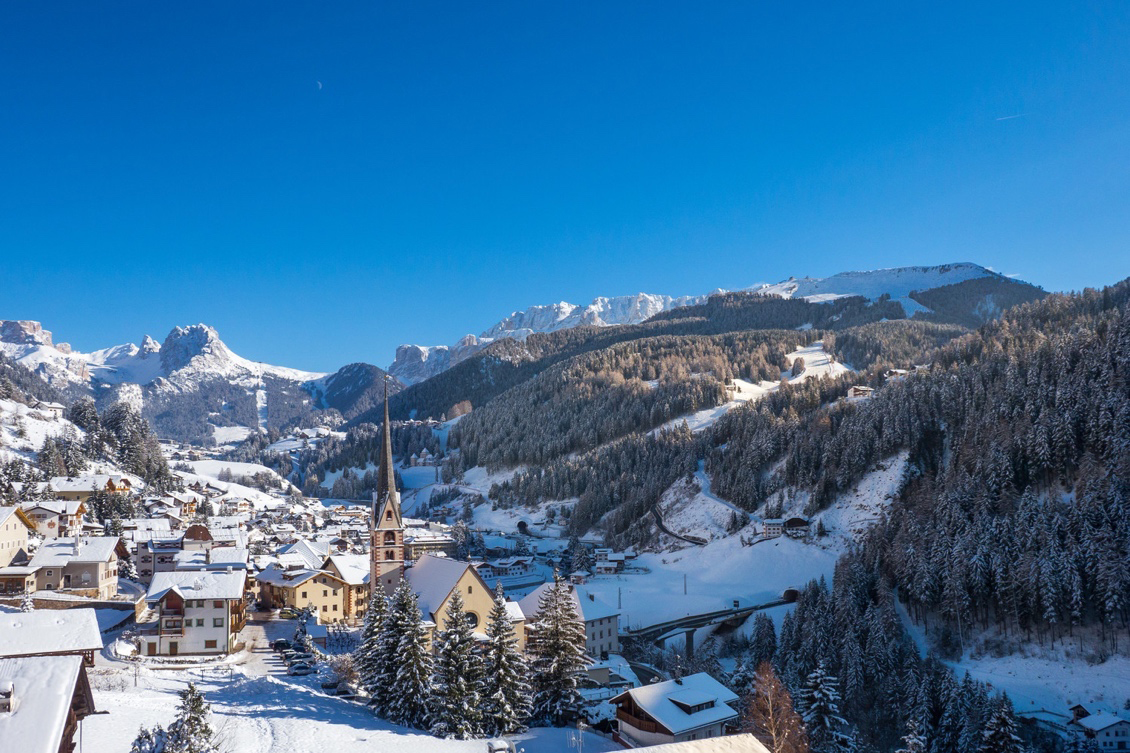 Fifty towns and villages fall under the Dolomiti Superski umbrella, all delightfully traditional and not a concrete tower block in sight. They span four different provinces: South Tyrol, Trentino, Belluno and the Veneto.
Fifty towns and villages fall under the Dolomiti Superski umbrella, all delightfully traditional and not a concrete tower block in sight. They span four different provinces: South Tyrol, Trentino, Belluno and the Veneto.
Much of the region once belonged to Austria-Hungary, and the architecture’s very Tyrolean with gabled rooves and wooden balconies. Factor in steepled chapels, cobbled streets and the surrounding peaks and you have some of the prettiest ski resorts in the world.
Cortina d’Ampezzo is the most internationally renowned resort – it became fashionable after hosting the 1956 Winter Olympics and continues to be Italy’s trendiest winter destination. Despite having three of its own ski areas, most of Cortina’s visitors come to shop and ‘be seen’ rather than ski, so if you like a resort with lots going on and/or lovely quiet pistes, it’s perfect.
The resorts in Val Gardena and Alta Badia (Dolomiti Superski’s two biggest ski areas and regular World Cup hosts) are also worthy of mention. Ortisei is Val Gardena’s largest base, while Selva’s the highest and a firm favourite for British skiers. In Alta Badia, Corvara and San Cassiano are peaceful villages popular for their gourmet restaurants. The Val di Fassa ski area is home to Canazei, known as one of the liveliest resorts in the region.
This is just a handful of the resorts and there are plenty of other charming villages such as San Cristina, Pozza di Fassa and Arabba if you prefer to stay somewhere smaller and quieter.
The skiing
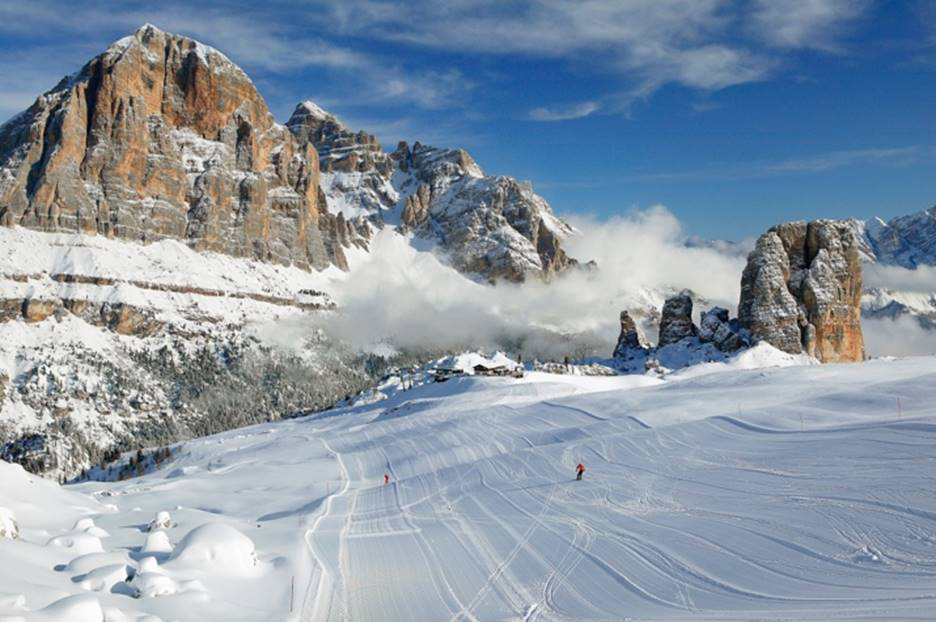 A network of ski lifts and buses connects each of the resorts with its local ski area and the rest of the Dolomiti Superski. In numbers: 12 ski areas, 1,200km of pistes (the highest at 3,343m) and 450 lifts. In words, one of the biggest, most beautiful ski regions on earth.
A network of ski lifts and buses connects each of the resorts with its local ski area and the rest of the Dolomiti Superski. In numbers: 12 ski areas, 1,200km of pistes (the highest at 3,343m) and 450 lifts. In words, one of the biggest, most beautiful ski regions on earth.
The individual ski areas range in size from 60km (San Martino di Castrozza) to 175km (Val Gardena) and together there’s terrain for all tastes and talents. Alta Badia has lots of wide, undulating terrain which is brilliant for beginners and those of us who like smooth, slow paced skiing. For experts, Arabba has steep, high-altitude descents both on and off-piste.
Not every ski area has lifts linking it to the next and sometimes you have to drive or take the bus between them. But you can still get a long way without having to hit the road. Anyone steady on the slopes can schuss through four ski areas (Val Gardena, Alta Badia, Arabba and Val di Fassa) in one loop on the world-famous Sella Ronda tour. If you set off in the morning, you can easily do it in a day (including time for tea breaks in the delightful mountain huts you pass along the way).
Ski tours seem to have become a Dolomite speciality – the World War Tour passes trenches, forts and other WWI artefacts or you can sample delicious local produce on the Gourmet Skisafari, Sommeliers on the slopes and Wine Skisafari tours.
If you need an extra pointer on the planks or like to have a local in charge of the itinerary, even the smallest resorts have a ‘scuola di sci’ with instructors and mountain guides. For those with grandkids in tow, the Italians are well known for the warm welcome they give ‘bambini’, plus under 8’s get free ski passes (over 65’s get a discount too)!
The food
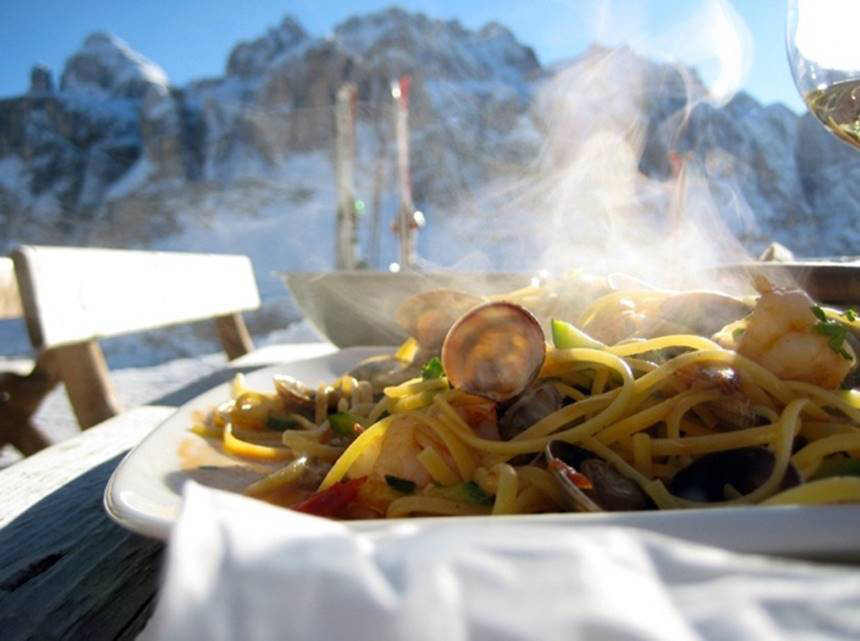 You could easily visit the Dolomites for the food and drink alone without even touching a ski pole (great for those travelling with non-skiers). If you’re not guzzling something as the sunset transforms the colours of the surrounding peaks, you’re doing it wrong! Tipples to try include the Advocaat-laced ‘bombardino’ and local pinot grigio (this happens to be one of Italy’s best wine regions).
You could easily visit the Dolomites for the food and drink alone without even touching a ski pole (great for those travelling with non-skiers). If you’re not guzzling something as the sunset transforms the colours of the surrounding peaks, you’re doing it wrong! Tipples to try include the Advocaat-laced ‘bombardino’ and local pinot grigio (this happens to be one of Italy’s best wine regions).
A lot of world class chefs come from part of Italy which is largely thanks to the fresh ingredients they can work with: herbs, fruits, cheeses, meats and more are all sourced in the local area. There are 14 Michelin star restaurants and hundreds of mountain huts serving Ladin, Tyrolean, Venetian and Trentino cuisine. Look out for barley soup and turtres (ladin fried pastries), schlutzkrapfen (a spinach ravioli) and apfelküchle (apple pancakes). Not only is the ski food delicious, it’s often a great deal cheaper than you’d find in France and Switzerland.
Where to stay
Hotels are the main type of accommodation you can find in package holiday format. Most of them are 4-star establishments but you’ll also find 2 and 3-star options for a cheaper stay and 5-star properties with luxurious spas and gourmet restaurants. Usually hotel holidays come with half board (breakfasts and dinners), though sometimes you’ll find B&B’s. Many are within walking distance of the ski lifts, slopes and resort centres, while those further out often operate shuttles. There aren’t many chalets in this part of Europe but you can find rental apartments if you prefer self-catering.
More information
Fly to Bolzano, Venice or Innsbruck (GoCompare is a good tool for finding the cheapest flights).
Hotel packages including travel, room, meals and ATOL protection can be booked through tour operators and travel agents. Prices range from £500pp to £3,000pp+ on SNO (type ‘Dolomiti Superski’ into their search to browse the whole area).
Apartments can cost anything from £60 to £800+ a night (the Tourism Office lists a few along with accommodation-only hotels).
Photo sources: Val Gardena Marketing, Bandion.it / Cortina Tourism, Elisa Fernetti / Alta Badia Tourism
